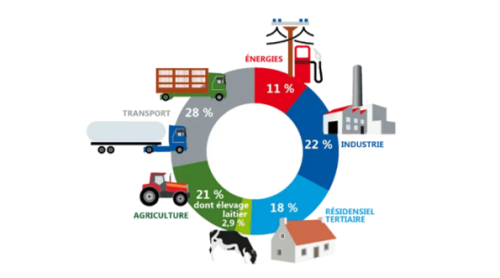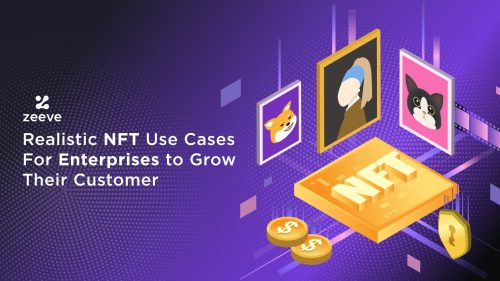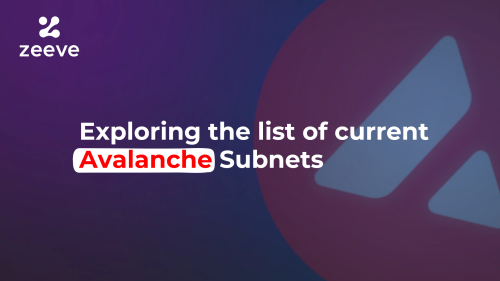
Blockchain for Good: Carbon Accounting and Voluntary Carbon Markets
We can expect more laws and consumer expectations for carbon reductions and an increased need for the disclosure of climate risk. It is going to become increasingly crucial that precise and verified climate-related disclosures are included in financial reports, as environmental issues will have an impact on a company’s bottom line.
Although reducing our carbon footprint is necessary, there are still some unanswered questions. How can companies implement new carbon reduction initiatives without seriously disrupting their supply chain? How can we obtain precise accounting? How will businesses benefit?
Although there are social and legislative attempts to reduce our carbon footprint, in this article, in this article we look at reporting of carbon emissions, i.e. carbon accounting, and voluntary carbon markets, examining what carbon credits are, how they are measured, how the market functions, and the benefit of blockchain technology.
Carbon Accounting Metrics
Everyone knows the importance of managing finances in a business, but with sustainability high on the agenda, carbon metrics are becoming essential. Let’s expand on carbon accounting.
What is accounting for carbon?
The process by which a business determines the amount of carbon dioxide emissions they are accountable for, in order to fairly and evenly trade carbon credits is known as carbon accounting, also known as greenhouse gas accounting. It provides a quantitative measure that a company or individual can be held accountable for.
Is carbon assessment different from carbon accounting?
The evaluation of quantitative data on emissions that is provided by carbon accounting is known as carbon assessment. This is what quantifies and ‘backs up’ what companies report in their carbon accounting figures.
There are two main ways of calculating carbon emissions, the spend-based approach and the activity-based approach. The spend-based method determines the quantity of emissions by dividing the economic worth of a good or service by the carbon emissions. This technique of carbon accounting makes use of environmentally extended input and output models, or EEIO models. While this is easier to use, it is not always accurate due to changing prices, exchange rates and so on.
The activity-based method of carbon accounting uses data to ascertain how many units of a certain material or textile component a company has bought, making it more precise than the spend-based method. For example, when using the spend-based method, only the cost of a product or service would be used to calculate the amount of carbon emissions produced, whereas the activity-based method uses the various amounts of the materials used for the product or service.
What are Carbon Credits and how do they work?
A carbon credit can be compared to a permit. A corporation is granted a permit to release a set amount of carbon dioxide (CO2) or other GHGs into the atmosphere. a set of guidelines for seven greenhouse gases specified by the 1997 Kyoto Protocol on accounting and reporting
– Oxygenated air (CO2)
– Methane (CH4) (CH4)
– Noxious gas (N2O)
– Hydrofluorocarbons (HFCs) (HFCs)
– Perfluorocarbons (PCFs) (PCFs)
– Hexafluoride sulfur (SF6)
– Fluorinated nitrous oxide (NF3)
One carbon credit can be used to emit one ton of carbon dioxide in total. Companies who go over the cap run the danger of being fined or facing increased taxes. By lowering the demand for products and services, carbon taxes are meant to dissuade people and businesses from emitting too much CO2. As an alternative, many countries, offer tax credits to citizens who responsibly capture, store, and/or use greenhouse gases. The greatest course of action for businesses is to lower emissions and work toward a sustainable economy, ideally one that is net zero.
Two Types of Carbon Credits
– Voluntary emissions reduction (VER) is a carbon offset that is traded for credits on the open market.
– To offset the emissions from a project, certified emissions reduction (CER) creates emission units (or credits) within a regulated framework.
Carbon credits and offsets complement one another. Carbon offsets are non-corporate initiatives. Building wind farms, maintaining forests, or planting new trees are examples of offsets. While there is no statutory necessity for carbon offsets, unlike carbon credits, when these kinds of projects result in a decrease in carbon dioxide emissions, a carbon credit is created. While carbon offsets help, they don’t stop pollution at its source. It ought to be viewed as a step in the right direction, as long as there is accuracy around both emissions and offsets, an area around which there is currently a lot of skepticism, and for valid reason.
Markets for Carbon Offsets and Net-Zero Incentives
Companies that minimize their emissions will have a surplus of carbon credits from their allowance that they can sell legally*. It is estimated that by 2030, the market for carbon credits will be worth $50 billion. Carbon markets aim to make it possible to buy and sell credits. The total amount of carbon and other greenhouse gas emissions are capped under a cap-and-trade system. Annual cap reductions get smaller and smaller each year, and this generates scarcity. This allows for trade under market principles with speculation leading some to hold onto their surplus carbon credits with the intention of selling them for a greater profit later, with others buying credits as a long-term investment. The ultimate goal however, is to arrive at a pollution-free, net-zero world made possible by more conscientious behavior, research and innovation. Rather than simply off-setting emissions especially where businesses have the buying power to be able to purchase credits, we should be motivated instead to minimize our carbon footprint especially as the validity and legitimacy of carbon offsets in current times are difficult to verify given the nature of the market. There is limited traceability and transparency which lends itself to issues such as double-counting, and this has led to the skepticism mentioned earlier.
The carbon credit and carbon offset market’s profitability has increased the rise of initiatives that mislead and defraud. Examples are the sale of useless carbon credits or the conservation of one area that increases the likelihood that deforestation will spread to another, as is the case in Brazil.
Blockchain Benefits
Blockchain technology has the potential to greatly increase accountability, transparency, and traceability. It can act as an enabler, allowing for businesses to provide data on carbon emissions that is more precise, trustworthy, standardized, and accessible.
The decentralized approach of blockchain provides both breadth and depth. It engages and enables everyone to participate in the calculation by allowing for tracking and reporting of reductions in greenhouse gas emissions along the entire supply chain, including manufacture, supply, distribution and consumption.
Smart contracts on the blockchain can be used to more accurately calculate, monitor, and report on the carbon footprint along the entire value chain. It can offer immediate authentication, real-time data verification, and clean data records. Carbon credits can be tokenized with blockchain-based tracking ensuring the carbon offset actually occurs by tightly controlling it.
It can also allow for us to validate the legitimacy of carbon offsets. The flow of information and value across the whole value chain provides a layer of trust, which makes it possible to track and record data from beginning to end with quantifiable proof and transparency. We can ensure that the the amount of emissions and the number of carbon credits used are aligned, based on total market supply and uniquely tracked.
The following are specific ways that blockchain can be of benefit:
– Increasing consumer confidence and avoiding greenwashing: The inaccurate and unreliable nature of data presents one of the biggest trading difficulties in the carbon market. Greenwashing can be limited as blockchain technology offers a much more transparent and distributed method of keeping track of transactions, giving consumers a detailed audit record for all the parts of a product across all phases of its lifecycle.
– Addressing double-counting: Blockchain has the potential to reduce the possibility of duplicate counting, and can strengthen reliability of data.
– Accurate Monitoring of carbon markets: Blockchain technology can track a carbon credit’s entire lifecycle, from creation to retirement. Voluntary markets can be expanded and made more accessible with transparent credit tracking made simple by blockchain technology. It could also be used as a tool to track company goals as well as the advancement of the Nationally Determined Contributions (NDCs) made under the Paris Agreement.
– Simplify and quicken the carbon trading process: Blockchain prevents monopolization and enabling streamlined and direct pathways for exchanging credits, shortening the time required for clearance and trade approval. By digitizing the discussion and agreement process, the use of smart contracts can speed up the purchase and sale of carbon credits.
– Increase credibility in clean energy trading: There are numerous credibility issues when it comes to locating accurate information about carbon credits, such as validation and verification. Blockchain technology can help by making it possible to develop peer-to-peer platforms, and by using tokens or traceable digital assets.
– Increase appropriate climate finance allocation: Blockchain technology can help ensure that funding is allocated to projects in a transparent manner and can speed up the growth of peer-to-peer financial transactions in favor of climate action. It can allow transparency that ensures that funds are directed toward addressing the problem of carbon emissions, not other agendas.
References
Green Running Ltd (2018). Verv VLUX Whitepaper – The Evolution of Energy Version 2.0.
Veritree (2022). Veritree | Verified Global Restoration Projects. https://www.veritree.com/.
Veridium Labs (2019). Veridium Labs: The Natural Capital Marketplace. https://www.veridium.io/.
Veridium Labs and Veridium Foundation (2019). WHITEPAPER Unlocking the World’s Environmental Asset Markets.
World Bank Group (2019). Blockchain and Climate Markets. In Open Learning Campus (World Bank Group).
Written By – Noleen Mariappen






Responses